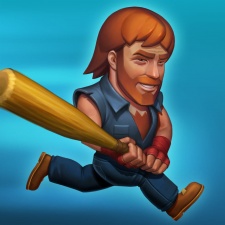Peggy Anne Salz is the Content Marketing Strategist and Chief Analyst of MobileGroove.
The recent spate of hits and misses from games companies that bought into top-name IP, no doubt convinced that big names and big budgets would produce big wins, calls for a rethink in how developers select IP and structure the deals to ensure success.
A big issue here is marketing. “A motivated rights holder who is engaged, and also engaging fans, can give the game a higher level of authenticity and a better sense of storytelling,” observes Russell Binder, a partner at marketing agency Striker Entertainment LLC.
Proactive and passionate involvement of IP holders and celebrities can give the game a big marketing boost. Unfortunately, the opposite is also true - which is why developers should demand firm marketing commitments from IP holders.
A rights owner who has a hands-off approach, or is singularly focused on collecting royalty payments, can cause even the hottest game to lose steam.
An even bigger issue is money. Games can go over budget, run into delays or just hit snags with rights owners. It’s why Binder advises developers to be realistic about timetables.
“Think about how your budget for the game applies across the timetable so that you’re not top-heavy in guarantees and then find yourself running out of funding to do the game,” he cautions.
Right game at the wrong time
If you’re squeezed by minimum guarantees, turn the problem into an opportunity to explore your financing options.
This is what Cosi Games did when its strategy to build on the success of its hit game Pelé: Soccer Legend hit a serious snag.
Cosi made the deal and the decision to release a game featuring boxing legend Muhammad Ali, but couldn’t foresee that the global launch of its game - over a year of hard work - would sadly coincide with the athlete’s death.
Users assumed – quite wrongly - that the game was made to exploit Ali’s passing. Downloads dwindled, costs exploded and royalty payments guaranteed to the IP owners spun out of control.
Josh Blitz, the studio’s CEO and founder, tells me he kept the company on track by working with Pollen VC, a UK-based FinTech company that provides receivables financing to app and games developers, thus allowing them early access to revenues they’ve earned from the app stores.
The cash injection allowed Cosi Games to pay the IP owners on schedule and invest in developing two new games to reignite the company’s reputation for quality sports games, including a soccer title featuring Spain's all-time top goal scorer David Villa.
Overall, the experience taught Blitz two important lessons about how developers need to structure IP deals to avoid high risk.
“One,” he says, “be careful about giving minimum guarantees. Two, never guarantee revenue.”
Overcoming the IP games glut
His advice is more pertinent than ever – especially now that current market dynamics leave developers little choice.
We reached a peak saturation point for IP-based games in 2016; it was a gold rush.Josh Burns
“We reached a peak saturation point for IP-based games in 2016; it was a gold rush when every IP you could think of had a mobile game,” observes Josh Burns, a consultant in the gaming industry sharply focused on business areas including IP licensing.
The outcome was a “glut of games released on Tier-1 IP at a staggering rate”.
What’s more, the power of big-name IP to break through discovery and distribution challenges waned, paving the way for approaches that emphasise partnership over profits.
“Licensors and licensees have learned to focus their efforts on well-defined and deep partnership deals,” Burns adds.
Both parties have come to realise only games with highly engaged fans bases coupled with high-quality game experiences are what moves the needle.
Still “money in the middle”
The shift from quantity to quality may produce better games that genuinely excite and engage fans, but it also unleashes a difficult dynamic that makes IP more expensive for indies.
It also turns the pressure up on developers to evaluate and calculate the *real* commercial value of their IP investments.
“For smaller studios it’s very hard - even impossible - to finance the acquisition of a major triple-A IP,” observes Klaas Kersting, CEO and Founder of Flaregames. To select the right IP at the right price, Flaregames started out with a focus on the middle.
“It’s a great untapped area of cult movie stars, retro action heroes and by-gone celebrities,” Kersting explains. They may not have large audiences, but they have loyal fans.
“There’s money to be made in the middle, if you know where to look, and that’s where we were attracted by the mystique and the memes around Chuck Norris.”
But, before establishing the partnership that would produce Nonstop Chuck Norris, the action game for iOS and Android that has just been released, Flaregames set out to “find out for sure if the minimum guarantee we agreed to pay was really a smart investment”.
First, Flaregames came up with a list of IP that “made sense with the gameplay” - a list that included Chuck Norris.
“Then we targeted ads at these audiences to see how they would react to the core mechanics of the original game, our own Nonstop Knight, and the celebrities and franchises we picked," says Kersting.
Selecting IP that performs
This twist on A/B testing - using the same same targeting and the same media at the same time - allowed Flaregames to compare the relative performance of the ads for the IPs.
“The price per install that we had to pay for a Nonstop Chuck Norris install was around one-seventh of the one we had to pay for the original Nonstop Knight - and additionally it had a significantly higher virality," says Kersting.
That was the proof - and the metrics - that showed a game with Chuck Norris IP would result in competitive CPI pricing and an edge for Flaregames.
It’s not enough to pick the right IP, because great IP doesn’t make your game scale automaticallyKlaas Kersting
The A/B testing also gave Flaregames an insight into “how the game would likely behave once we launched it, and the appropriate marketing budget we would have to put behind it to leverage the IP properly,” Kersting explains.
This was a smart move since, with about one-third of the budget spent on game development, Flaregames couldn’t afford to make assumptions about the audience size or what it would take to scale.
“It’s not enough to pick the right IP, because great IP doesn’t make your game scale automatically," states Kersting.
"IP can only be leveraged properly if you know the marketing budget and costs you need to fund so that your marketing funnel doesn’t dry up.”
A big boost came from Norris’ hands-on approach, a prerequisite for a solid partnership and proactive promotion.
The result is a viral video ad and a comprehensive strategy to co-create and promote the game to appeal to two lucrative audiences: older users who are familiar with Chuck Norris, the actor; and “the new guys that only know Chuck Norris for his cool memes”.
My take:
From creative approaches to financing royalties payments to rights holders, to innovative A/B testing to quantify the advantages of investing in IP in the first place, developers are getting smarter about how they reduce the risk and increase the benefits for their business.
In a saturated market developers have to choose IP carefully. Demand marketing commitments, structure deals that are sustainable and focus on the metrics that make sense commercially, and you can tap opportunity - and make money - in the middle.





















